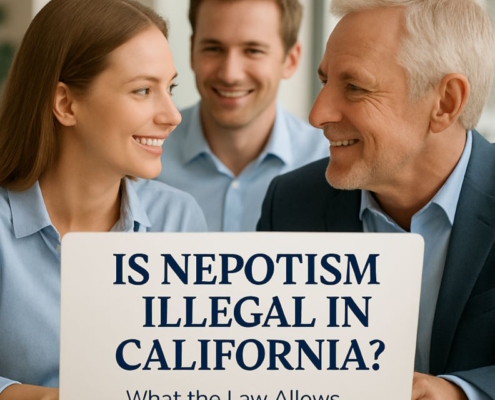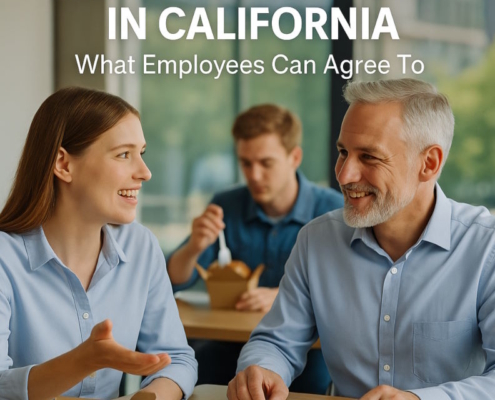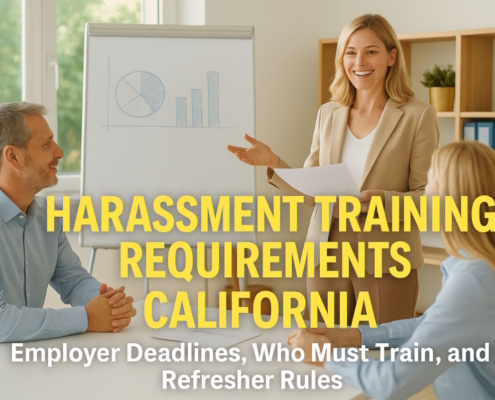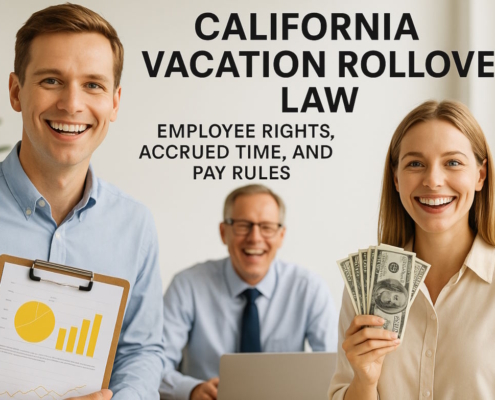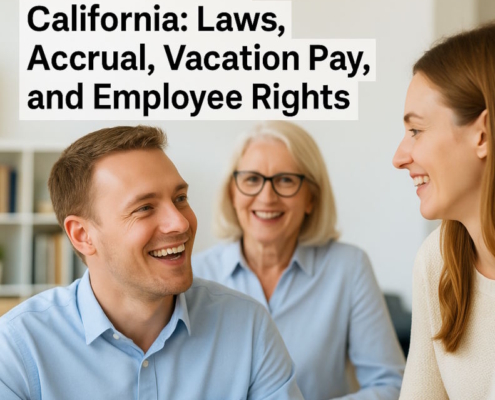What Is Considered Full-Time in California For Health Insurance?
By Douglas Wade, Attorney
Email | Call (800) 484-4610
What is considered full time in California?
For purposes of work health insurance, an employee who works thirty hours or more is considered full time in California. Before the enactment of the Affordable Care Act, the definition of a “full-time” employee was clear-cut and unequivocal — it signified an individual committed to a complete 40-hour workweek. Employees who contributed fewer hours were conveniently categorized as “part-time.” This understanding provided a straightforward distinction, aiding both employers and employees in determining employment status and associated benefits.
However, the landscape shifted dramatically with the implementation of the Affordable Care Act. This transformative legislation introduced a revised classification of a “full-time” employee – now characterized as an individual who commits to working at least 30 hours each week is considered full time in California or, alternatively, a minimum of 130 hours per month. This alteration aimed to extend healthcare coverage to a broader range of employees by considering those who worked slightly fewer hours as eligible for benefits traditionally reserved for full-time workers.
This new definition that thirty hours is considered full time in California, although designed to broaden access to healthcare provisions, inadvertently triggered a wave of confusion across the employment sphere. The conventional notion of a 40-hour workweek as the hallmark of full-time employment became muddled with the new standard. Employers and employees who is confused about what is full time in California should contact our business law firm to avoid misinterpretations and misunderstandings.
In the midst of this uncertainty, we shall endeavor to provide clarity. Rest assured that the foundational understanding what is considered “full-time” employee in California remains consistent with a 40-hour workweek. While the Affordable Care Act did modify the eligibility criteria for healthcare benefits, it is imperative to distinguish between healthcare considerations and the broader definition of full-time work. A traditional 40-hour workweek still embodies the essence of a “full-time” commitment.
The Affordable Care Act introduced an innovative classification for healthcare benefits, ushering in a redefinition of “full-time” employment as encompassing 30 hours a week or 130 hours a month. However, we must emphasize that the bedrock definition of a full workweek remains 40 hours. Amidst change in legislation, this understanding remains a guiding principle in the world of employment.
Are you full-time at 30 hours for work health insurance?
Under the Affordable Care Act (ACA), a company with 50 or more full time employees are required to offer health insurance to those workers working at least 30 hours a week is considered full time, or at least 130 hours a month.
Before the ACA was passed, most employers and employees in the United States knew full-time work as a 40-hour workweek. However, employees who worked under 40 hours a week were simply known as part-time workers.
However, the ACA established that employees could work a minimum of 30 hours per week or 130 hours monthly, and their employer could consider them full-time workers. Despite the new standard, most employers and employees still see the concept of “full-time” as a 40-hour workweek. In conversation, for example, many employers and workers identify full-time workers as those who work eight hours per day, five days per week.
Technically, the law now says that in California, as in the rest of the US, employees can work for 30 hours per week, or a minimum of 130 hours per month, and register as full-time workers.
Can An Employer Change an Employee from Full-Time to Part-Time in California?
California workers must know that their part-time or full-time hour status in California is at their employer’s discretion. Part-time workers are typically ineligible for benefits, as opposed to full-time workers. However, employees who work 40 hours per week is considered as full-time and receive health insurance benefits.
California employers have much more control over this situation as opposed to workers. For example, an employee regularly works 38-39 hours per week. Sometimes, the employee even works 39.5 hours per week. Yet, the business can still legally identify the worker as “part-time” as long as they do not work 40 hours per week.
However, another important aspect of the ACA is that it incentivizes providing health care to employees in some situations. So, how does the ACA make acquiring health benefits easier for some employees?
The ACA requires companies with 50 or more full-time workers to choose between two options for providing benefits. Under the ACA, larger companies must either:
- Offer healthcare benefits to an employee who works 30 hours per week or more, or 130 hours per month
- Pay a tax penalty
Many businesses elect to provide their employees with benefits because it benefits the workers and avoids paying a costly tax fee.
It is important to note that while larger companies with 50 or more employees must make this decision, smaller businesses are not held to the same rules.
At What Point do California Workers Get Health Benefits?
Small California businesses can decide which of their employees deserves benefits. Benefits typically contain dental and medical plans, as well as disability insurance and life insurance.
However, even full-time employees in the state do not automatically receive benefits from some companies. This decision is left up to the preference of the company.
However, when companies in California offer benefits to full-time workers, the company’s rules to decide which employee receives benefits must remain the same for each worker. Therefore, when companies decide how they will classify employees and who will receive benefits, they should do so carefully, because these decisions will impact everyone.
For example, suppose a company in California decides that their employees must work a minimum of 35 hours per week is considered as full time in California. In that case, that classification means all employees working 35 hours per week are full-time. However, an employee from a different department who works 35 hours per week cannot be considered part-time. Therefore, if full-time workers receive benefits at 35 hours per week, all employees who work 35 hours a week benefit from the company.
Sometimes, small businesses try to save money by only providing certain employees with benefits, even though other workers log the same amount of hours. Employees who cannot collect benefits based on an employer’s unfair or discriminatory practices should contact an experienced attorney because they may be able to file a discrimination suit.
Most employers in California understand the importance of rightfully classifying their employees and communicating their standards for providing benefits. While employers need to have a system in place for classifying workers and a logical plan regarding who receives benefits, it is also important for workers to ask questions and stay informed.
For example, before an employee accepts a job offer in California, they should be certain that:
- The employee understands the way the company classifies full-time and part-time workers
- The employee understands if they will be eligible for benefits.
- The employee has read California’s Labor Code to fully understand the differences between part-time and full-time employees.
Questions Regarding California Employees and Benefits
Many employees in California have questions about their employer’s policies or their potential for benefits. Here are some of the most commonly asked questions:
When an Employer Deprives a Worker of Benefits, What Can the Worker Do in Response?
When employees believe they have a right to benefits, but their employer will not pay them, they should contact an experienced employment lawyer. Whether the problem is a misunderstanding or something more serious, a skilled attorney can help organize the case’s details and determine if the company is doing something wrong.
Employees who worry about legal fees should be able to find a lawyer who practices contingency litigation, meaning that the worker will only need to pay if they win the case.
What is the Definition of Full-Time in California?
The ACA changed California’s definition of a full-time employee. Whereas many considered full-time work to be 40 hours per week, now an individual who works a minimum of 30 hours per week is considered a full-time worker. However, we often hear employers and employees referring to full-time as 40 hours because that definition has existed for a long time in the business world.
Are full-time workers in California Automatically Paid Benefits?
Large companies with 50 or more full-time workers must offer benefits to employees who work a minimum of 30 weekly (130 hours a month). If a company decides not to provide benefits to these employees, they have to pay a tax benefit. Smaller companies, however, are not held to this state-wide standard. As a result, companies with 50 or fewer workers can decide how they will provide benefits and to whom.
Learn more about: Business | Corporate | Employment
See all articles: Business | Corporate | Employment



